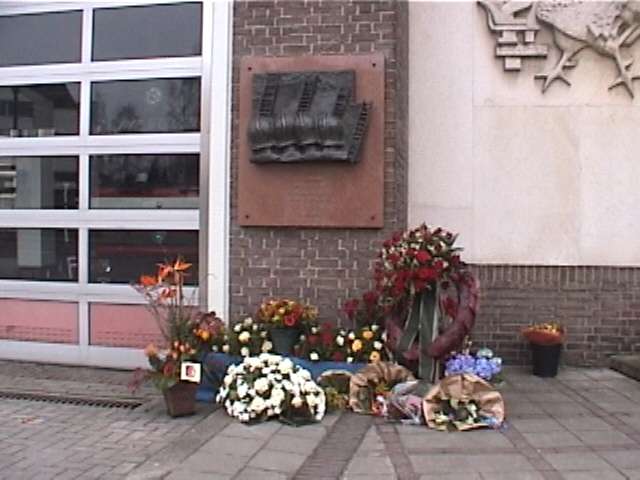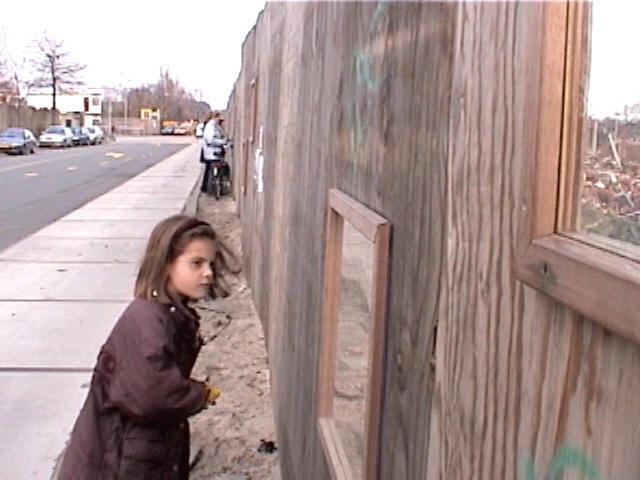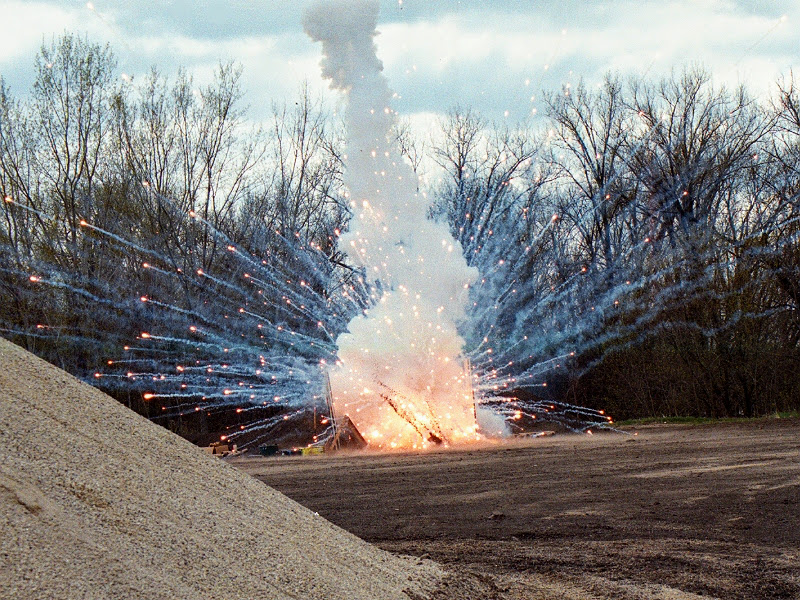
The May 13, 2000 Enschede fireworks disaster (Dutch: vuurwerkramp in Enschede) at the SE Fireworks facility was series of three very powerful blasts, thousands of secondary explosions and subsequent fires that resulted in at least 22 deaths, including 4 firefighters.
The tragic incident injured at least 974 people, many severely, and severely damaged and/or destroyed over 400 homes and businesses.
THE BEGINNING
Enschede is a small city of about 150,000 people inland located near the German and Belgian borders. That Saturday, it was an unusually hot, windy day and unusually dry for the Low Countries along the North Sea.
SE Fireworks was primarily an importer of fireworks that packaged and distributed them in Western Europe. It was located in a mixed industrial and residential neighborhood that was developed in the late 19th and early 20th century.
As is typical for many businesses in metropolitan areas in Western Europe, the compound was surrounded by a tall brick wall with a large gate to the street. Houses and small businesses were adjacent to and across from the facility.
In the early afternoon a small fire broke out at the compound. The local fire brigade responded and attacked the fire in the main building with water hoses. A crowd gathered in the street outside the compound to witness the event.
At first the fire seemed to be confined to packing materials, but then it spread to the fireworks stored in nearby bunkers. The fireworks started shooting off in many directions, resulting in even more fireworks exploding and shooting into the air.
Photos and video taken by bystanders showed one of the owners running from the facility as the intensity of the fireworks going off increased.
A powerful fireworks blast occurred shortly after he moved out of view. The fireworks continued to go off with changing intensity as the fire moved through the facility. A second and third large blast followed with more fireworks going off all around the area.
The explosions killed the 4 fire fighters who were on the scene attempting to control the initial fire. Debris, firebrand and burning fireworks from the explosions came down in the area.
One of the blasts in the reinforced concrete bunker left a 4 foot (1.3 m) deep crater that was over 40 feet (13 m) wide. The most powerful blast was felt some 19 miles (30 km) away.
The blast damage was over 400 meters from the facility, with secondary fire damage up to 1 km away. Some of the largest pieces of debris, including pieces of reinforced concrete from the bunker, landed over ½ km.
THE FIREWORKS FACILITY
The SE Fireworks facility consisted of an administrative building, a main building (reinforced concrete ) w/ 13 “bunkers” where fireworks were stored, plus a “packing room”. The main building had initially been erected for a cardboard recycling facility that serviced the nearby Grolsch Brewery.
There were also 7 MAVO Boxes (A type of portable garage) and 14 – 40′ ISO shipping containers used for fireworks storage in small groups inside the compound. The groups of Mavo boxes and ISO containers were only separated from each other by a narrow walkway.
FIREWORKS CLASSIFICATIONS
The facility was licensed for 158,000 kilos of fireworks classified as UN0336, 1.4g. The fireworks were primarily imported from China for distribution in Western Europe.
In reality, the facility had far more fireworks in storage than what it was licensed to contain. And more importantly, it contained tons of more powerful fireworks that should have been classified as either UN0335 1.3g or UN033 1.1g, including 12″ (305mm) aerial fireworks shells and salutes (flash powder based explosives).
These larger, more powerful fireworks are typically for professional use only in many countries. They present a mass explosion hazard, in particular when there are significant quantities in one place at one time.
Fireworks that are classified as UN0335 1.3g or UN033 1.1g usually have more stringent shipping, storage and handling standards than those for fireworks classified as UN0336, 1.4g. This is because of the greater hazard they present over their smaller, less powerful cousins.
Subsequent investigation revealed the fireworks were imported as UN 0336 1.4g because they were shipped from China under INCO terms Cost, Insurance, and Freight (CIF), which means the shipper must pay for the shipment rather than the buyer. As a result, the shippers will often choose the lowest dangerous goods classification for the particular commodity because it saves them money.
The transportation system is based in large part on trust that shippers will properly classify and declare their shipments. The ocean carriers, port and customs officials, and trucking companies will accept this classification, usually without question.
Holland, like many other countries, bases their the import, port, inland shipping and storage requirements on the the shipping classifications declared by the original shipper.
Many importers knowingly will take advantage of the situation, and even encourage shippers to use the wrong classifications because it saves money. It also may allow them to sell larger, more powerful fireworks devices to the general public.
BUILDINGS & STRUCTURES
Dutch homes and buildings are primarily wood frame structures with brick facades and clay tile roofs. This was a style mandated from the 14th century to reduce the risks of large fires in the densely populated cities and villages.
Unfortunately, the powerful blasts blew the windows out in many structures and also stripped the clay tiles off many roofs. This exposed the combustible contents to the smaller, secondary explosions of the fireworks spread over the area from the blasts. The high winds and hot temperatures also exacerbated the situation with firebrand from the initial fires.
Fire fighters were initially overwhelmed by the scope and intensity of the fires. Fire brigades from around the region, including neighboring Germany responded, but it took hours to get the fires under control.
CAUSE
A man came forward and confessed to starting the initial fire, however his story did not add up and he was eventually cleared.
It was known that the owners sometimes demonstrated small fireworks for customers inside the compound. There were reports that this was the case that day as well, however substantiating this proved difficult.
The the normal operating procedure was to open the doors of the packing room, the bunkers, the MAVO Boxes and the 40′ ISO containers to be able to access the fireworks for the workers to put orders together for shipment to customers. This certainly was a factor in the fire spreading to the fireworks stored in the bunker with the first large blast.
THE RESPONSE
The fire fighters knew there were fireworks stored at SE Fireworks. In fact, they had purchased smoke devices for training. However, they were expecting to fight a fire of fireworks that were classified as UN0336 1.4g, which are never supposed to be a mass explosion hazard.
The neighborhood street was not evacuated because the fire fighters reacted based on the information that had from the Dutch government that licensed the facility. And the Dutch government in turn relied on the documents provided by SE Fireworks from the Chinese exporters that classified the fireworks as UN0336 1.4g.
Thus the response was not what it should have been, which would be to evacuate the area and not attempt to fight fires near large quantities of explosives with a mass explosion hazard.
CARDINAL RULES
No matter the initial cause, or the quantity of fireworks permitted by licensed or over the license, many of the cardinal rules of explosives storage and operations, especially for fireworks which are sensitive to impact, friction, heat, spark and flame were violated:
- limit the quantity of fireworks in any one place at one time
- the larger and more powerful the fireworks, the father away they need to be stored from public roads and occupancies as well as from each other
- keep all fireworks storage magazines protected (doors closed) unless actively coming or going
- eliminate or control all potential sources of ignition
- restrict, limit or control all combustible materials (grass, weeds, shipping cartons, pacing materials, etc.) in or around fireworks storage magazines
- if fireworks are tested, only do so in designated areas that are safe distances from stored fireworks
- have an emergency response plan in place for the types and quantities of fireworks being handled and stored at the facility
- educate and train employees and first responders to the emergency plan
- understand that fireworks have solid fuels and oxidizers – they do not rely on atmospheric oxygen for combustion – only large quantities of water, can have an impact on burning fireworks
- only fight small fires of combustible materials that are outside of fireworks storage magazines that can be suppressed quickly
- only contain fires of fireworks that are UN 0336 1.4g from safe distance
- never fight a fire of fireworks that are UN 0335 1.3g or UN033 1.1g – retreat, evacuate and prepare mass explosions followed by secondary explosions and fires
In most other countries a fireworks facility with this quantity of these types of fireworks would never, ever be permitted to be in a densely populated part of a city. Instead, it would be required to be in a remote area covering dozens of acres of open, unoccupied land.

MY ROLE
I have served on the National Fire Protection Association (NFPA) Technical Committee on Pyrotechnics since 1988. One of the Fire Codes we are responsible for is NFPA 1124, Code for the Manufacture, Transportation, and Storage of Fireworks and Pyrotechnic Articles.
I had met the previous owner of SE Fireworks and had some basic idea about the operation and Dutch regulations. It seemed incredible that a modern country like Holland could experience a tragedy of this scale.
I began to make inquiries to try to learn more and managed to make contact with officials in Holland, including fire fighters and witnesses in Enschede. I began to learn not everything was as it seemed.
In March of the following year, I visited Enschede at my own expense. I met with fire fighters, officials and witnesses, and learned more about what happened and especially why.
My paper Enschede: Lessons to Relearn was presented at the 6th International Symposium on Fireworks in Orlando, Florida in December 2001.
